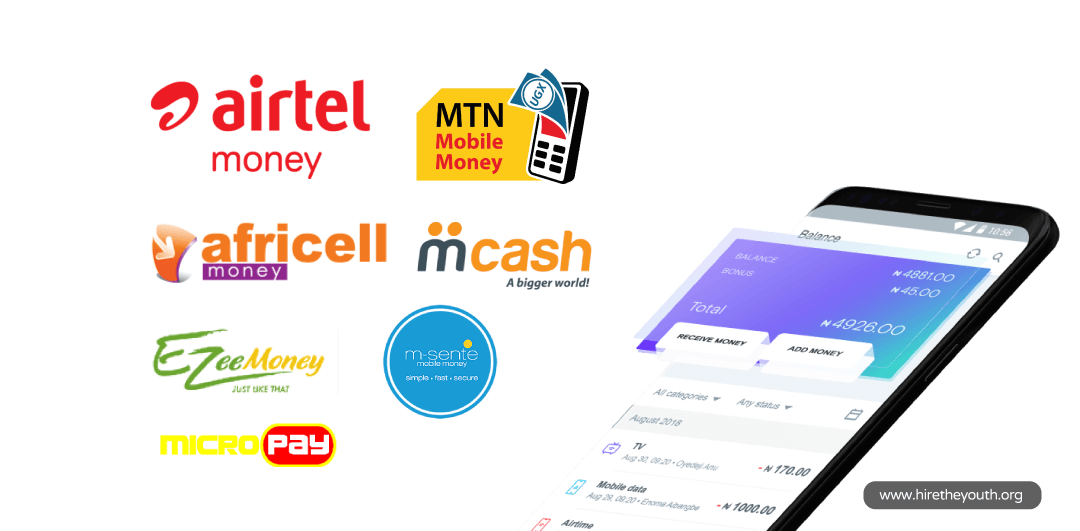The Mobile Money industry on the whole has continued to thrive over the past 15 months compared to most other sectors of the economy, taking advantage of the opportunities created by the measures to contain COVID-19.
The evolution of mobile money services in the year 2019/2020 was phenomenal partly driven by the effects of COVID-19 on the economy, according to the ministry of finance.
“Even with the contraction of the service sector, mobile money remained robust and resilient to the economic shocks precipitated by COVID-19 and the restrictions put in place to contain its spread.”
The Uganda Communications Commission says it is due to release performance reports for the year ended March 2021, later this week.
Since the start of the COVID-19 pandemic in March 2020, digital payments were hailed as the safer and more practical alternative to cash, given the need to limit physical contact between traders and buyers of different goods and services.
In the first of the pandemic running to April 2021, active users of mobile money services had not yet reached their potential, according to the ministry. The number of active users of the service, compared to the registered users grew to 64% percent by April 2021, from 61 percent in the previous year. This means that there were many previously registered by idle numbers, which were eventually activated during the period.
This contributed to the high growth in the number of total users to an all-time high of 30.89 million by April 2021, according to the records.
The regulations define active user or customer accounts as those “used to perform at least one person-to-person payment, deposit onto account, withdrawal from account, utility and bill payment, merchant payments, bulk payment, received or sent international remittances and airtime top up from account; during at least 90 days prior to end of the reporting period.”
The period has also seen mobile money users further diversify their use of the services in response to the lockdown, resulting in the growth in the value of many sub segments of mobile money over the year, according to the Bank of Uganda. The industry is divided into four major segments, the most popular being the Person to Person service.
The others are Person to Business, Bank to Wallet and Wallet to Bank.
The number of mobile money transactions between person and person grew by three quarters from 571.303 billion recorded in the 12 months ending April 2019, to 1 trillion transactions in the 12 months ending April 2020. This also grew further 44% to 1.44 trillion in the 12 months to April 2021.
All service segments grew between April 2019 and April 2021 with the exception of person to Business (P2B) segment which declined by 26.6 percent in the 12 months to April 2020, as the lockdown affected businesses in first full month of the pandemic.
“The decline in value was on account of the national lockdown that stifled economic activity. Moreover, as part of the national COVID-19 task force prevention strategy, payment for utilities (water & electricity) which make up a significant portion of P2B was deferred by about 6 months,” says the Ministry.
However, from April 2020, person-to-business transactions grew again as more people found that this was the easiest available way to access services, while economic activity picked up later in the year.
By April this year, such transactions had more than doubled to 305 billion in 12 months.
Users have also increasingly adopted the use of mobile banking, with getting money from the bank to the mobile wallet recording a growth in transactions from 140 billion in the year ended April 2019, to 305 billion in the 12 months from the year ended April 2021.
Transactions from phone to bank also grew throughout the period, from 71.6 billion by April 2019 to 92.6 billion between then and April 2021.
In the first full year of the pandemic, between April 2020 and April 2021, the number went up to 156.7 billion. With the gradual opening up of the economy, the P2B segment registered the highest growth of 165 percent, indicative of the recovery of economic activity as businesses gradually opened up.
“This has been reinforced by the change in customer payment habits that developed during the lockdown in which many customers opted for the use of mobile money merchant codes for the few businesses that remained physically open and those which were operating online,” says the Ministry of Finance in the background to the budget.
The service providers have also slightly reduced the costs of using mobile money especially in sending money.
“We appreciate that many people rely on MTN MoMo to facilitate various aspects of their lives and therefore believe that this reduction in withdrawal fees increases the benefits that have made mobile money such a transformative service over the years,” Stephen Mutana, the General Manager of Mobile Financial Services.
The growth in mobile money is expected to continue, according to operators, even with the separation of the business from telecommunications. “MTN has a subscriber base of 14.1M customers, 11M of which are also mobile money users. There is no impact on the customer from the separation, our customers continue to enjoy our mobile money services seamlessly,” says the MTN Senior Manager Communications.





